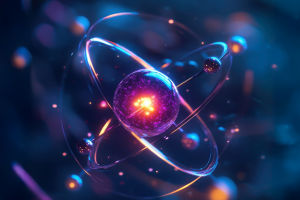Power Through Physics

Hey Lykkers! Have you ever been totally amazed watching a sprinter explode off the blocks or a soccer player blast a ball into the net with jaw-dropping speed? Sure, it’s all about talent, training, and sheer grit — but there’s also a hidden force working behind the scenes: kinetic energy.
This physics superstar plays a huge role in how athletes move faster, jump higher, and hit harder. Today, let’s break down what kinetic energy is and how it shapes sports performance. You might just see your favorite athletes in a whole new light!
What Exactly Is Kinetic Energy?
Kinetic energy is the energy an object has because it’s moving. It’s not just about speed — it also depends on the object’s mass. The formula for kinetic energy is:
Kinetic Energy = ½ × mass × velocity²
What jumps out here is that velocity (speed) is squared — meaning if you double your speed, your kinetic energy increases four times. That’s a big deal for athletes who want to move faster or hit harder.
Kinetic Energy in Action: How Athletes Harness It
In sports, kinetic energy is everywhere. Whether it's running, cycling, swimming, or throwing, athletes are constantly generating, transferring, and controlling kinetic energy.
Sprinters and Runners: Their muscles convert chemical energy into kinetic energy, pushing their bodies forward at amazing speeds. The faster they can accelerate and the more force they apply, the more kinetic energy they produce.
Cyclists: When cyclists pedal, they increase the bike’s velocity and kinetic energy. Downhill sections let them use stored kinetic energy to coast fast without extra pedaling.
Throwers and Hitters: Whether it’s a baseball pitch, a javelin throw, or a tennis serve, athletes transfer kinetic energy from their bodies through their limbs and equipment to the object, launching it with incredible speed and power.
Swimmers: Swimmers push water backward using their limbs. This reaction force propels them forward, turning muscular energy into kinetic energy through water resistance.
Why Speed Matters More Than Mass
While both mass and velocity impact kinetic energy, velocity has a much bigger effect because it’s squared in the equation. That’s why speed is so crucial in sports.
For example, a sprinter may not be the heaviest athlete, but because they achieve incredible speeds, their kinetic energy — and thus their power — is huge. Small improvements in velocity can lead to big performance gains.
Energy Transfer: The Art of Efficiency
Good technique in sports isn’t just about brute force — it’s about efficient energy transfer. When an athlete moves well, they minimize energy loss and maximize kinetic energy directed at their goal.
Take a tennis player serving: their entire body—from legs to torso to arm—is involved in generating kinetic energy. The challenge is to smoothly transfer that energy through the racket to the ball for maximum speed and accuracy.
Similarly, a basketball player’s jump shot depends on converting their kinetic energy into the ball’s movement with precision, requiring perfect timing and technique.
Kinetic Energy and Injury Prevention
Understanding kinetic energy isn’t just for boosting performance — it’s also key to staying safe. Sudden, uncontrolled changes in kinetic energy — like quick stops, sharp turns, or awkward landings — put a lot of stress on muscles and joints.
Athletes train to control these forces through proper form, strengthening, and warm-ups to manage kinetic energy changes safely. Coaches use this knowledge to design training programs that reduce injury risk while improving athletic performance.
Real-World Examples
Football players use kinetic energy when sprinting toward the ball or tackling opponents. The faster and heavier the player, the more kinetic energy involved, which makes collisions powerful and potentially dangerous.
Gymnasts manipulate their body’s kinetic energy to perform flips and twists mid-air, controlling speed and rotation precisely.
Formula 1 drivers rely on kinetic energy management every lap — speeding up on straights to maximize kinetic energy, then slowing down carefully without wasting energy through brakes and sharp turns.

Final Thoughts
So, next time you’re cheering on your favorite athlete, remember — behind every lightning-fast sprint or powerful throw is kinetic energy in action. It’s the invisible force fueling their speed and power, shaped by physics and perfected through training.
Understanding kinetic energy helps us appreciate sports not just as games, but as incredible demonstrations of science and human potential.
Got questions about how physics explains other sports or daily life phenomena? Hit me up — I’m here to break it down and make science fun!


